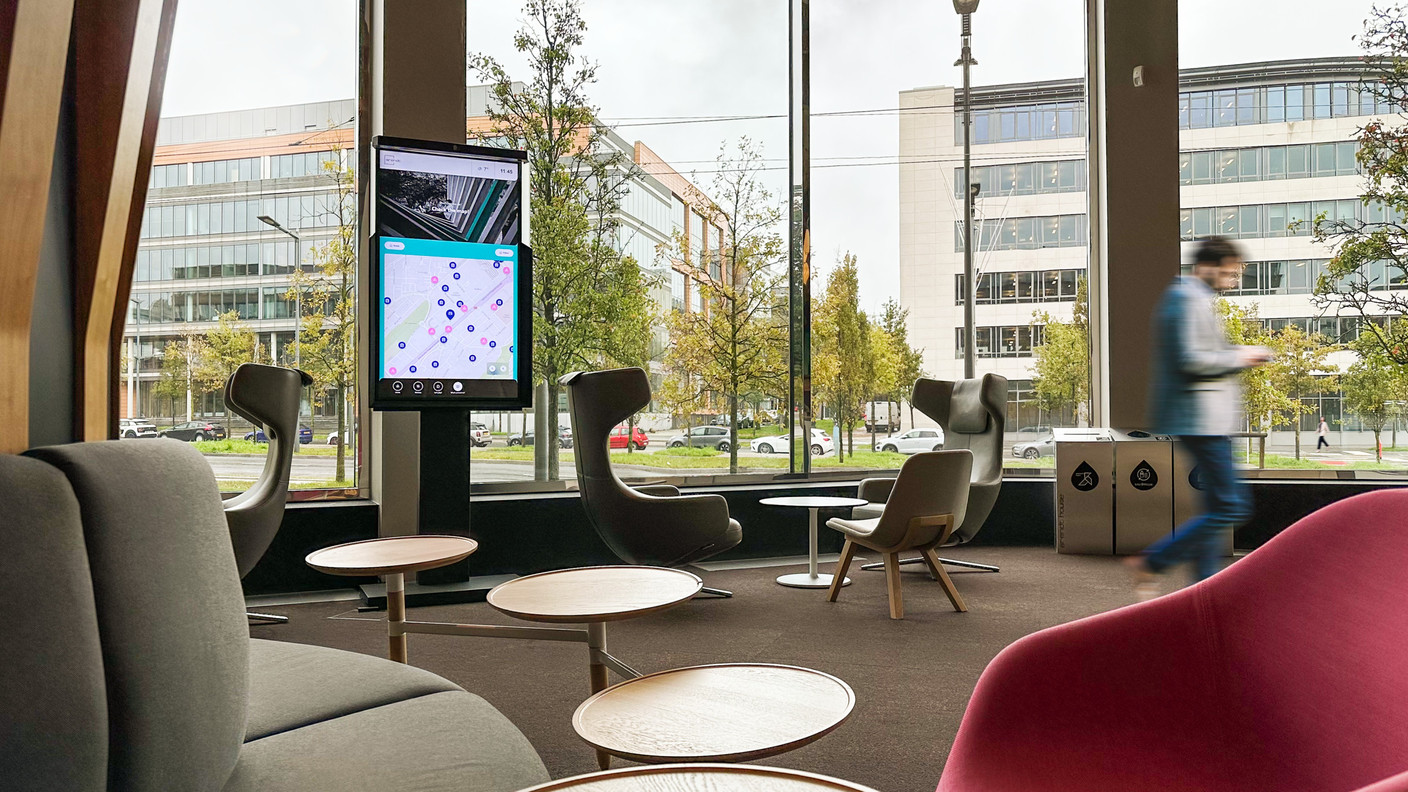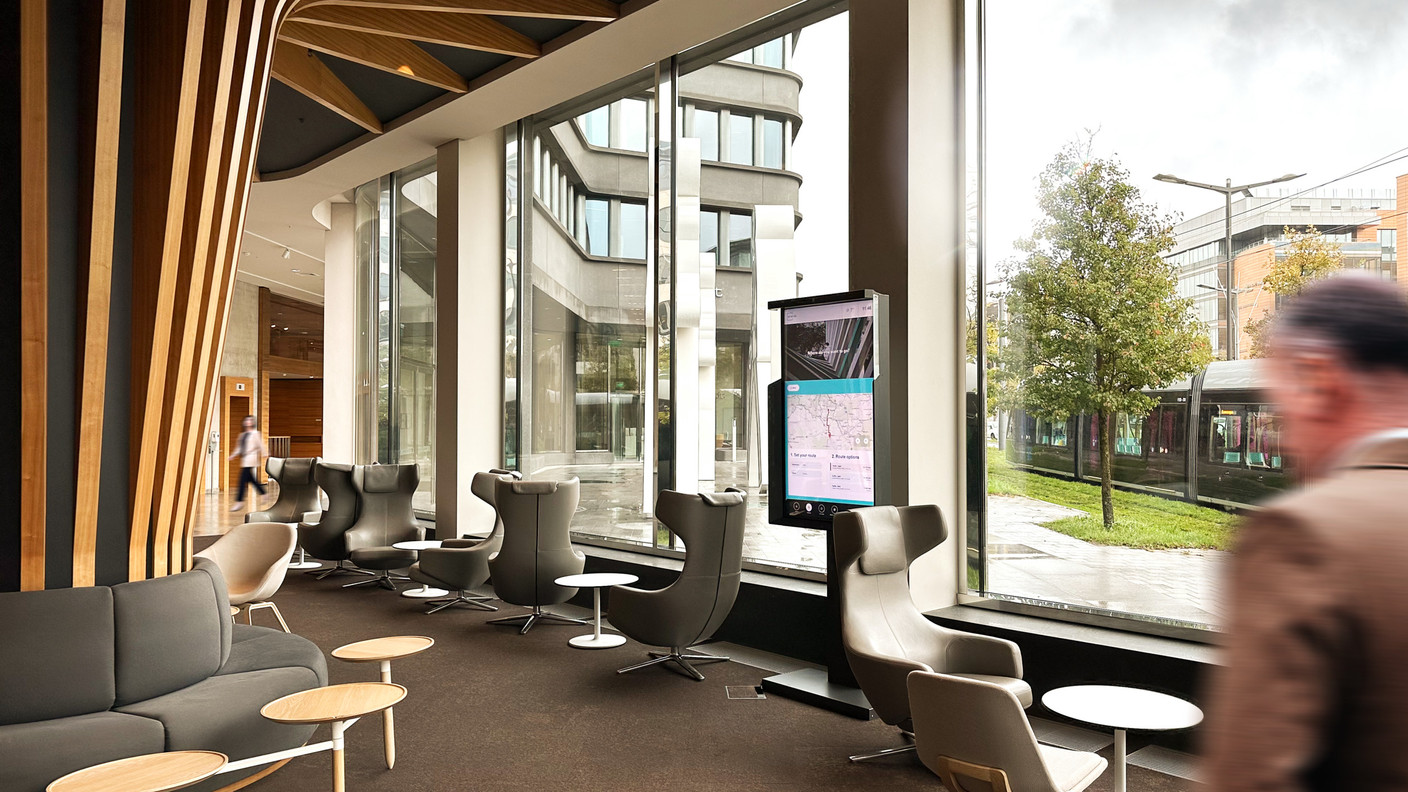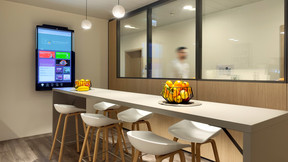Abigail Okorodus: What is the reason behind the brand’s current strategic orientation to the corporate world?
Olivier Raulot: Post-covid, companies are facing new challenges: hiring is complicated (tense market), they have to be more attractive to candidates and in response to the democratisation of hybrid work, they have to strengthen the cohesion between employees that spend less time together than before. Also, collaborators have new expectations: hybrid work has become a must, flexible working hours and two-way communication (no more top-down only). We can also mention that, in Luxembourg, more and more firms are launching satellite offices and having a unified and powerful communication tool for all the working places is really helpful. Obviously, the demand for touchless technology and no-touch interactions has become really strong since the pandemic. Today, companies want--and have to--take care of their employees and clients. Our solution made of hardware (AIRxTOUCH) and software (SKA, our cloud-based software enabling marketing teams to create, manage and monitor interactive content) is an excellent way to meet these needs and face the new challenges.
AO: What functionalities will the interactive displays at Arendt provide?
OR: Agenda: displays the upcoming events. It’s a sortable list (by category of event, date, location) and each event leads to a fully detailed page. If activated, a QR code leads the user to a register page.
Media galleries: what better way to remember a past event than through a photo and video gallery? This feature is here to reinforce the social cohesion and create good times with colleagues. It’s what this is all about.
Traffic info: real-time traffic information. The user can set their destination and the time of departure then discover how much time it will takes to drive there.
POI map: it’s a map with points of interest all around the office displaying real-time information too, such has bus / train / tramways stops (with timetables), highway cameras, bike and car sharing stations. The client can also add their own POIs: charging stations or nice places to eat, for instance.
Survey: employees can respond to internal surveys on various topics and thus make their voices heard. The topics can be about mobility, future events etc. The marketing team can access the results with graphs and data that can be exported and reused.
News feed: displays the news in real-time (it’s an overview). Users can continue to read the full article on their mobile phone after having scanned a QR code.
Restaurant menu: employees can consult the menu offered at the company restaurant. There’s an option enabling a QR code to scan and download the menu on to a mobile phone.
PDF Library: this module delivers all your readable content (publications, brochures, …), sortable by category and / publication date. There’s an option enabling a QR code to scan and download the menu on a mobile phone.
TV: displays live tv channels (sport, news, …).
Games: the perfect feature to create cooperation among the team.
AO: Will companies with an extensive remote working policy pose a threat or challenge in deployment within the corporate market? Is this something you are worried about or discussing?
OR: We are not worried and we consider these companies as opportunities, they are an accelerator of our strategy since, more than others, they have to reinvent. The democratisation of remote work – which wasn’t expected that fast – pushes companies to rethink their internal communication and organisation. Bringing these interactive displays in coffee corners is an effective way to ensure cohesion and efficiency of internal communication. Talking about other companies with extended remote working policy, we have noticed that the need is still here but different. It’s more likely to welcome and guide visitors and/or clients. In other markets (banking for instance), our touchless interactive solution is requested for the welcome of clients especially in agencies without staff, which becomes a trend. Nowadays in Luxembourg, the legal frame does not allow crossborders employees to fully work from home and it seems it won’t change tomorrow…
AO: Do you see a missed opportunity with the subtle covid recovery we’ve seen in recent times?
OR: It’s obvious that the pandemic has put the light on hygiene considerations. Since then, behaviours have changed and people expect to increase their use of touchless technologies – especially in the public space – to avoid physical contact, even once the pandemic is over. People view touchscreens as unhygienic. At iNUI, we think that, talking about the pandemic, there’s a before and an after. Brands, institutions, companies want and have to be ready for the next pandemic and – beyond that particular event – our technology is a perfect solution against seasonal diseases such as flu or gastroenteritis. Touchless is the new normal, not a trend. Also, our product is no more expensive than a standard touchscreen and is also easy to use.
AO: With several deployments across Europe – do you see that interactive touchless technology is becoming (more or less) adopted? What are the trends you’ve observed?
OR: To be honest, we are only at the beginning of the business of touchless and it remains a very small market for the moment. On the other hand, we are in discussion for several large-scale projects (public space and general public) that should – if they come to fruition in 2023 – accelerate the massive adoption of touchless.
AO: You mentioned partnerships in the foodservice industry in Canada. There were plans to deploy in Luxembourg’s food industry. Is this plan still in the works?
OR: That’s right, after a first successful test in December 2021, we are now deploying at scale in Canada for a very famous local restaurant chain named St-Hubert (a KFC-like concept, created in 1951 in Québec). This deployment in 27 restaurants is currently ongoing and will end in January 2023. This client was one of the three early adopters of our product launched in January 2022. It would be amazing for us to work for the foodservice industry in Luxembourg. We have some names in mind.
Discussions are ongoing with other audit and advice firms, retail and automotive brands.






